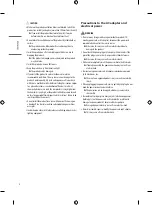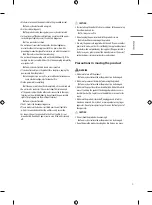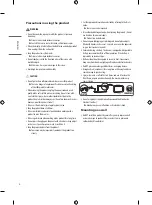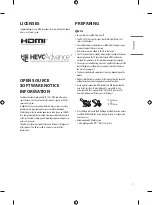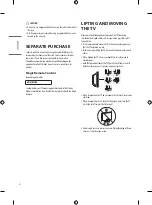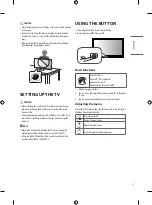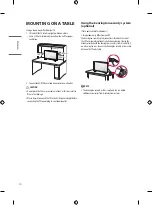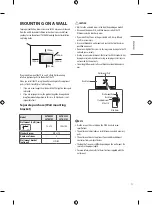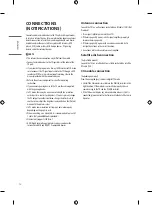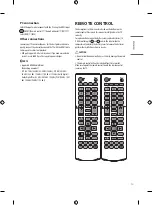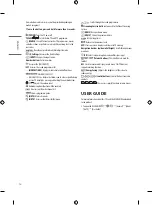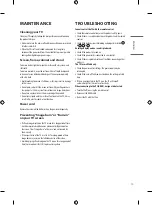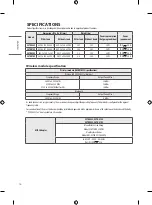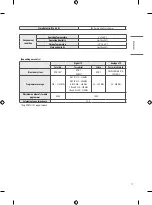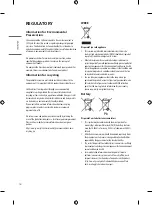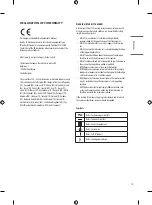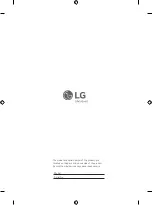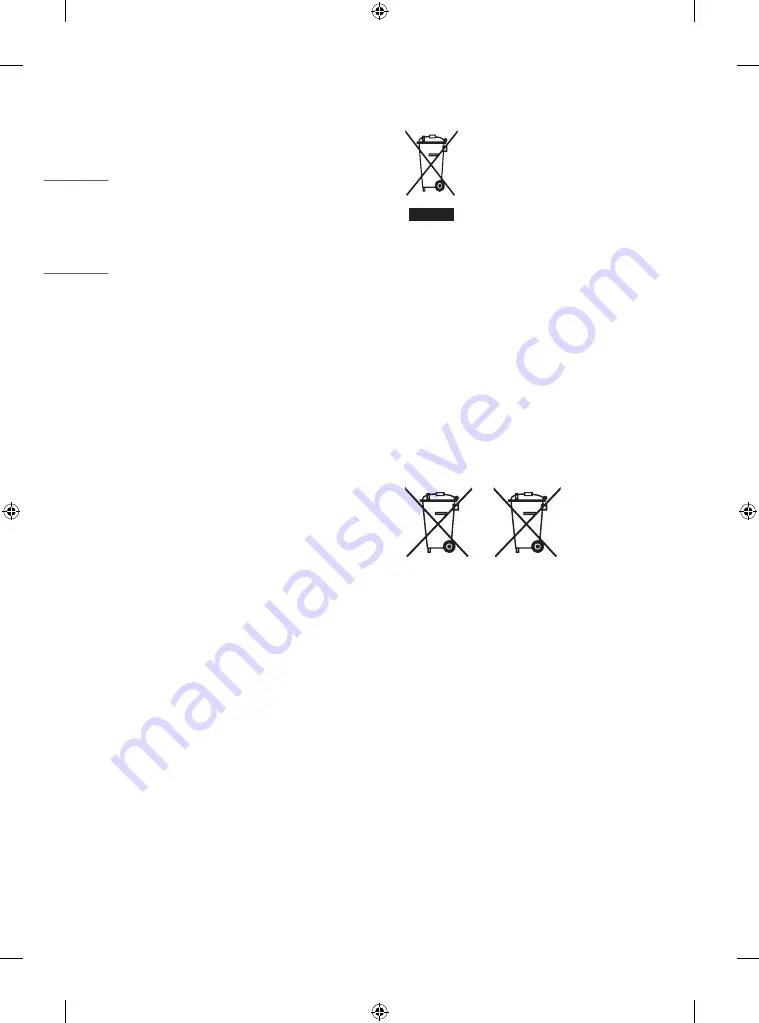
18
ENGLISH
REGULATORY
Information for Environmental
Preservation
LGE. announced the ‘LG Declaration for a Cleaner Environment’ in
1994, and this ideal has served as a guiding managerial principle
ever since. The Declaration is a foundation that has allowed us to
undertake environmentally friendly activities in careful consideration
of economic, environmental, and social aspects.
We promote activities for environmental preservation, and we
specifically develop our products to embrace the concept of
environment-friendly.
We minimize the hazardous materials contained in our products. For
example, there is no cadmium to be found in our product.
Information for recycling
This product may contain parts which could be hazardous to the
environment. It is important that this product be recycled after use.
LGE. handles all waste product through an environmentally
acceptable recycling method. There are several take-back and
recycling systems currently in operation worldwide. Many parts will
be reused and recycled, while harmful substances and heavy metals
are treated by an environmentally friendly method.
If you want to find out more information about our recycling
program, please contact your local LG vendor or a corporate
representative of LG.
We set our vision and policies on a cleaner world by selecting the
issue of the global environment as a task for corporate improvement.
Please visit our website for more information about our ‘green’
policies.
http://www.lg.com/global/sustainability/environment/take-back-
recycling.jsp
WEEE
Disposal of your old appliance
1 This crossed-out wheeled bin symbol indicates that waste
electrical and electronic products (WEEE) should be disposed of
separately from the municipal waste stream.
2 Old electrical products can contain hazardous substances so
correct disposal of your old appliance will help prevent potential
negative consequences for the environment and human health.
Your old appliance may contain reusable parts that could be used
to repair other products, and other valuable materials that can
be recycled to conserve limited resources.
3 You can take your appliance either to the shop where you
purchased the product, or contact your local government waste
office for details of your nearest authorised WEEE collection
point. For the most up to date information for your country
please see
www.lg.com/global/recycling
Battery
Pb
Disposal of waste batteries/accumulators
1 This symbol may be combined with chemical symbols for
mercury(Hg), cadmium(Cd) or lead(Pb) if the battery Contains
more that 0.0005% of mercury, 0.002% of cadmium or 0.004%
of lead.
2 All batteries/accumulators should be disposed separately from
the municipal waste stream via designated collection facilities
appointed by the government or the local authorities.
3 The correct disposal of Your old batteries/accumulators will help
to prevent potential negative consequences for the environment,
animal and human health.
4 For more detailed information about disposal of Your old
batteries/accumulators, please contact Your city office, waste
disposal service or the shop where You purchased the product.
(
http://www.lg.com/global/sustainability/environment/take-
back-recycling/global-network-europe
)

